Mid Coast
The rugged coast of Maine is too extensive to cover in a single page, so we have broken it into three parts. This page covers the central part of the coast from the town of Brunswick to Acadia National Park. The South Coast page covers the coast from the New Hampshire border to Brunswick while the North Coast page covers be the stretch from Bar Harbor to the Canadian border. The mid coast area is characterised by a its many fiords, bays and islands. It is the most spectacular section of the Maine coast as the south and north sections of the coast are less fragmented.
Waldo Theatre, Waldoboro
A village called Broad Bay was established here in 1733 but an Indian attack destroyed it In 1746 during King George’s War. In 1752 Boston Merchant Samuel Waldo brought 1,500 settlers here from Germany aboard the ship Lydia. and in 1773 the town was incorporated as Waldoboro in his honour. In the 19th century Waldoboro became a major shipbuilding centre and shipbuilding continued into the 20th century. Modern Waldoboro has many reminders of its German origins, including a German Church. The Waldo Theatre was built as a movie theatre in 1936. It was designed by New York City architect Benjamin Schlanger who used a classical Greek Temple design with four columns at the front. The theatre closed in 1957 and was then only used occasionally as a Masonic Lodge. In 1986 Frances “Kitty” Fassett purchased the theatre and adapted it for live performances. She gifted the theatre to a non-profit organisation in 2006 but that organisation was unable to keep it going and it closed in 2014, the year after this picture was taken. A residents group was formed in 2016 and at the time of writing they were attempting to restore and reopen the Waldo Theatre.
Wharf, Port Clyde
At the end of the St George peninsula nestles a typical small coastal town. The early growth of Port Clyde was fuelled by fishing, granite quarries, sawmills and shipbuilding. It later became a major centre for fish canning. Nowadays Port Clyde has a population of little more than 1,000 and the sea remains crucial to its economy. Fishing boats still sail from here and the harbour is full of pleasure craft.
Waterfront at Rockland
And now for a big town, by the standards of this part of the Maine coast. A lumber camp was founded here back in 1767 but by 1850 when the name Rockland was adopted the main industries were shipbuilding, lime production and fishing. Rockland is now home to nearly 8,000 people and is the mainland port for ferries serving several nearby islands. Fishing remains an important industry and tourism has now become a major part of the town’s economy. Rockland is the home of the Maine Lobster Festival held during the first week of August. It is also the home of the Maine Lighthouse Museum, where you can learn about lighthouses as well as the traditions and heroic acts their people. Click Tab 2 to see a picture of the Maine Lighthouse Museum.
Stonington Harbor, Deer Island
Deer Island, on the eastern side of Penobscot Bay, is linked to the mainland by a 1939 supension bridge to Little Deer Isle. Stonington is a town of just over 1,000 people situated near the southern tip of the island. Early farming depleted the soil Deer Island, so fishing and shipbuilding became the main industries. Stonington remains a fishing town as even now fishing boats outnumber pleasure craft.
Click on Minimap to navigate
Home > US States > New England > Maine >
Bucksport from Fort Knox
Located on the Penobscot River, Bucksport manages to be both a commercial shipping port and a typical pretty Maine town. Like most places in this area, the town has remained low rise and the church spires still tower over it. On the opposite side of the river is Fort Knox, which is not the one where the US keeps its gold reserves (that one is in Kentucky). This Fort Knox was built after the War of 1812 to protect the Penobscob River from attack in anticipation of a third war with Britain. That third war never came so the fort never served its intended purpose. Click Tab 2 to see a closer view of Bucksport complete with fall foliage.
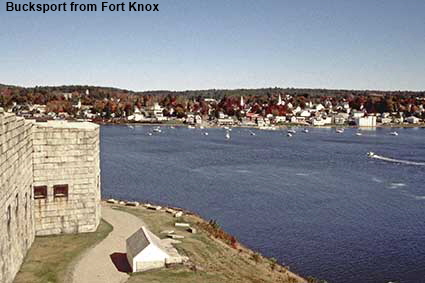
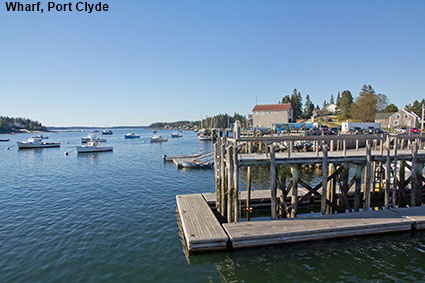
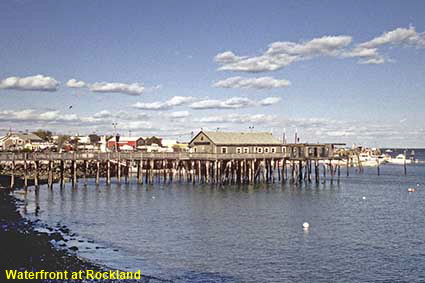
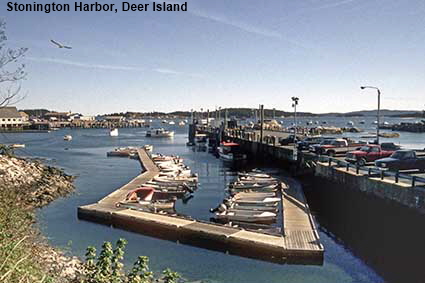
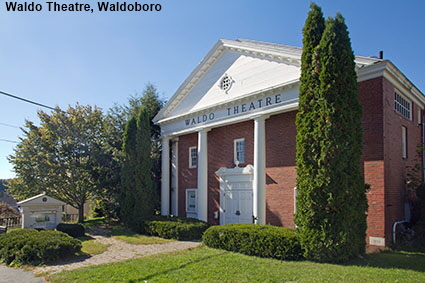
DLU180418


To continue the Maine Trail, click the arrows above. To find out more about the Mid Coast click below or on the Minimap:
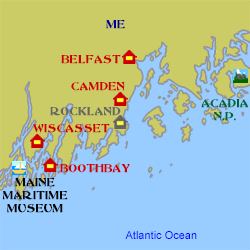
Fowler-True-Ross House, Penobscot Marine Museum, Searsport
The oldest maritime museum in Maine was founded in 1936 to preserve the 19th century seafaring heart of the town of Searsport. Settled in the 1760s and incorporated in 1845, Searsport became a major shipbuilding centre. At its peak the town had 17 shipyards and around 200 ships were built in in the yards. The town also had a significant role in the sailing of ships; in the 19th century it was the home of more sea captains than any other US town. The Fowler-True-Ross House is a beautifully preserved example of a sea captain’s house. It dates back to 1815 when it was purchased by Miles Fowler and it remained in his family for 152 years, ending with his great granddaughter Rebecca Ross. In 1967 she sold the house to the Penobscot Marine Museum and it has been preserved as a typical sea captain’s house of the era. The barn behind the house is occupied by a collection of canoes and recreational boats. The museum is open daily between the Memorial Day weekend and the 3rd weekend in October. Click Tab 2 to see the formal parlor in the Fowler-True-Ross House.
Waterfront from wharf, Castine
Sitting near the end of a peninsula separating the Bagaduce River from Penascob Bay is the town of Castine. It was the French who first settled here, building Fort Pentagöet in the 1630s to claim the area as part of Acadia, a colony of New France. The Dutch briefly occupied Castine in 1674 then in 1676 they returned and destroyed Fort Pentagöet. The 1713 Treaty of Utrecht of ceded Acadia to Britain but British settlement at Castine did not begin until the 1760s. During the Revolutionary War Britain built Fort George on the peninsula to defend the bay. American forces attempted to capture the fort but were defeated. During the War of 1812 the British returned, capturing the town in late 1814 and remaining there until the end of the war. Castine grew into a major fishing port and shipbuilding centre. In summer its port also became increasingly busy with steamers bringing in tourists to stay in large hotels built in the area. In the 1930s Castine was hit by a double whammy; the great depression and tourists switching to travelling by car instead of ships and trains. With poor road links Castine went into decline and most of the large hotels closed. It was the sea that brought Castine back to life. The Maine Maritime Academy , a public post-secondary college and nautical training institution, was established in the town in 1941. Improved roads have also brought tourists back to see its waterside setting and 18th and 19th century houses.
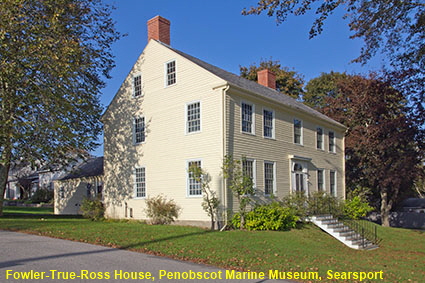
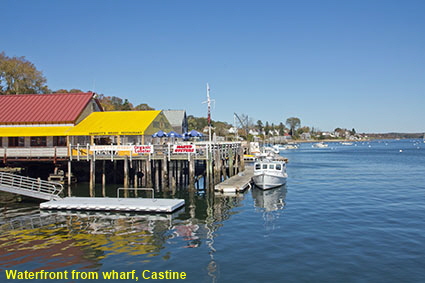

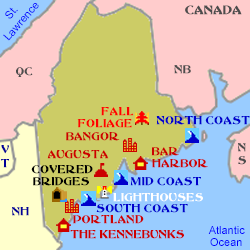
© Mike Elsden 1981 - 2025
The contents of this page may not be reproduced in full or in part without permission